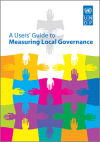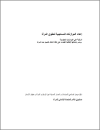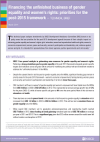FOUND 24
This Guide was preared by Alexandra Wilde, Shipra Narang, Marie Laberge and Luisa Moretto UNDP Oslo, 2009.
The report makes a significant contribution to the advocacy work on the transparency of budgets. It provides arguments for increasing the accountability of government budgets to women's rights.
The report, authored by Professor Diane Elson, a leading feminist economist, makes a significant contribution to the advocacy work on the transparency of budgets. It provides arguments for increasing the accountability of government budgets to women's rights.
A summary guide for policy makers, gender equality and human rights advocates" is a publication based on a report by Diane Elson "Budgeting for Women's Rights: Monitoring Government Budgets for Compliance with CEDAW" by UNIFEM 2006.
The report, authored by Professor Diane Elson, a leading feminist economist, makes a significant contribution to the advocacy work on the transparency of budgets. It provides arguments for increasing the accountability of government budgets to women's rights.
Budgeting for Women's Rights Monitoring Government Budgets for Compliance with CEDAW: summary..(Fr )
A summary guide for policy makers, gender equality and human rights advocates" is a publication based on a report by Diane Elson "Budgeting for Women's Rights: Monitoring Government Budgets for Compliance with CEDAW" by UNIFEM 2006.
A summary guide for policy makers, gender equality and human rights advocates" is a publication based on a report by Diane Elson "Budgeting for Women's Rights: Monitoring Government Budgets for Compliance with CEDAW" by UNIFEM 2006.
Paper discussing the definition and measurement of Sustainable Development Goal (SDG) Indicator 5.c.1. (reclassified to Tier II) and comparing Indicator 5.c.1 with other SDG fiscal indicators.
This note provides an overview of existing gender equality markers and reviews issues relating to the tracking and monitoring of investments related to gender equality and women’s empowerment.
This technical paper analyses investments by OECD Development Assistance Committee (DAC) donors in six policy areas that are priorities for the post-2015 development agenda because of their catalytic impact on achieving gender equality and women’s rights: girls’ education; sexual and reproductive he







